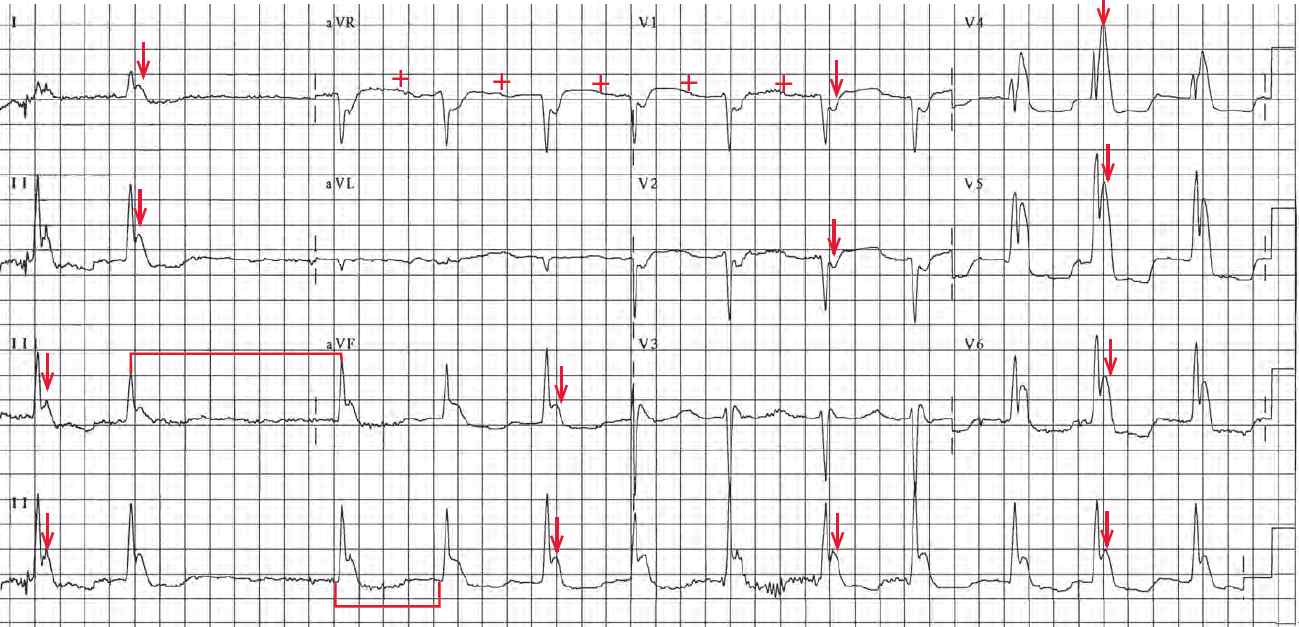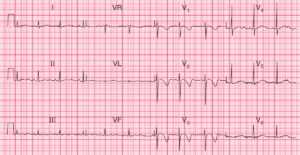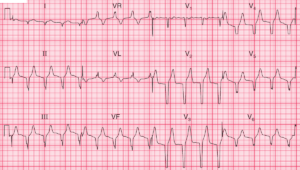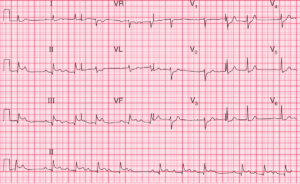This blog post is an answer to the ECG Case 168
The ECG shows there is a regular rhythm at an average rate of 74 bpm. There is one long RR interval noted (┌┐). In addition, the eleventh QRS complex (^) is slightly premature.
P waves (+) can be seen before each QRS complex, although they are very small and barely obvious. The PR interval is constant (0.32 sec). Therefore, this is probably a normal sinus rhythm with a first-degree AV block. The eleventh complex is likely a premature atrial complex.
The long RR interval (┌┐) is equal to two RR intervals (└┘); this is a sinus node exit block. The QRS complex duration is normal (0.08 sec). The axis is normal between 0° and +90° (QRS positive in leads I and aVF). The QT/QTc intervals are prolonged (520/580 msec).
Noted are prominent waveforms (↓) after the QRS complexes that are significantly elevated and wide. These are J waves or Osborn waves. The Osborn waves and long QT are characteristic of hypothermia.




